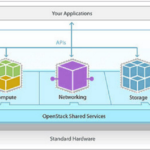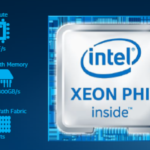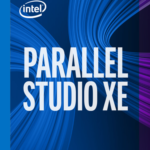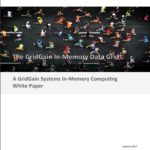Video streams may constructed using various standards, which contain information such as resolution, frame rate, color depth, etc. It is the job of the transcoder to take in one format and produce another format that would then be used downstream. While an application could be written that does the transformation, optimizing the application requires the expertise of the hardware manufacturer.
Why the OS is So Important when Running HPC Applications
This is the fourth entry in an insideHPC series that explores the HPC transition to the cloud, and what your business needs to know about this evolution. This series, compiled in a complete Guide available, covers cloud computing for HPC, why the OS is important when running HPC applications, OpenStack fundamentals and more.
Intel Processors for Machine Learning
Machine Learning is a hot topic for many industries and is showing tremendous promise to change how we use systems. From design and manufacturing to searching for cures for diseases, machine learning can be a great disrupter, when implemented to take advantage of the latest processors.
Cloud Computing Continues to Influence HPC
Cloud technologies are influencing HPC just as it is the rest of enterprise IT. This is the second entry in an insideHPC series that explores the HPC transition to the cloud, and what your business needs to know about this evolution. This series, compiled in a complete Guide available, covers cloud computing for HPC, industry examples, IaaS components, OpenStack fundamentals and more.
Intel® Graphics Performance Analyzer for Faster Graphics Performance
“Just as developers need tools to understand the performance of a CPU intensive application in order to modify the code for higher performance, so do those that develop interactive 3D computer graphics applications. An excellent tool for t this purpose is the Intel Graphics Performance Analyzer set. This tool, which is free to download, can help the developer understand at a very low level how the application is performing, from a number of aspects.”
Creating Applications with the Intel Computer Vision SDK
“In order for developers to be able to focus on their application, a Vision Algorithm Designer application is included in the Intel Computer Vision SDK. This gives users a drag and drop interface that allows them to create new applications on the fly. Large and complex workflows can be modelled visually which takes the guesswork out of bringing together many different functions. In addition, customized code can be added to the workflows.”
Let The Compiler Do Its Thing
“In the past, developers would get best results if a loop was unrolled, that is, duplicating the body as many times as needed to that the operations could be operated on using full vectors. The number of iterations would reflect the hardware that the code was targeted towards. Since the application may have to run on different hardware in the future, results for todays generation of hardware may be compromised in the future. In fact, it is better to let modern compilers to the unrolling.”
Six Steps Towards Better Performance on Intel Xeon Phi
“As with all new technology, developers will have to create processes in order to modernize applications to take advantage of any new feature. Rather than randomly trying to improve the performance of an application, it is wise to be very familiar with the application and use available tools to understand bottlenecks and look for areas of improvement.”
Vectorization Leads to Performance Gains
Applications that can take advantage of the new vectorization capabilities of the Intel Xeon Phi processor will show tremendous performance gains. “When considering vectorization, there are different tools that can assist the developer in determining where to look further. The first is to look at the optimization reports that are generated by the Intel compiler and then to also use the Vector Analyzer that can give specific advice on what to do to get more vectorization from the code.”
In Memory Computing Speeds Results
In-Memory Computing can accelerate traditional applications by using a memory first design. Applicable to a wide range of domains, In-Memory Computing and In-Memory Data Grids take advantage of the latest trends in computer systems technology. “In-memory computing is designed to address some of the most critical and real-time task requirements today. This include real-time fraud detection, biometrics and border security and financial risk analytics. All of these use cases require very low latency access to data from very large amounts of data, which results in faster and more accurate decisions.”












